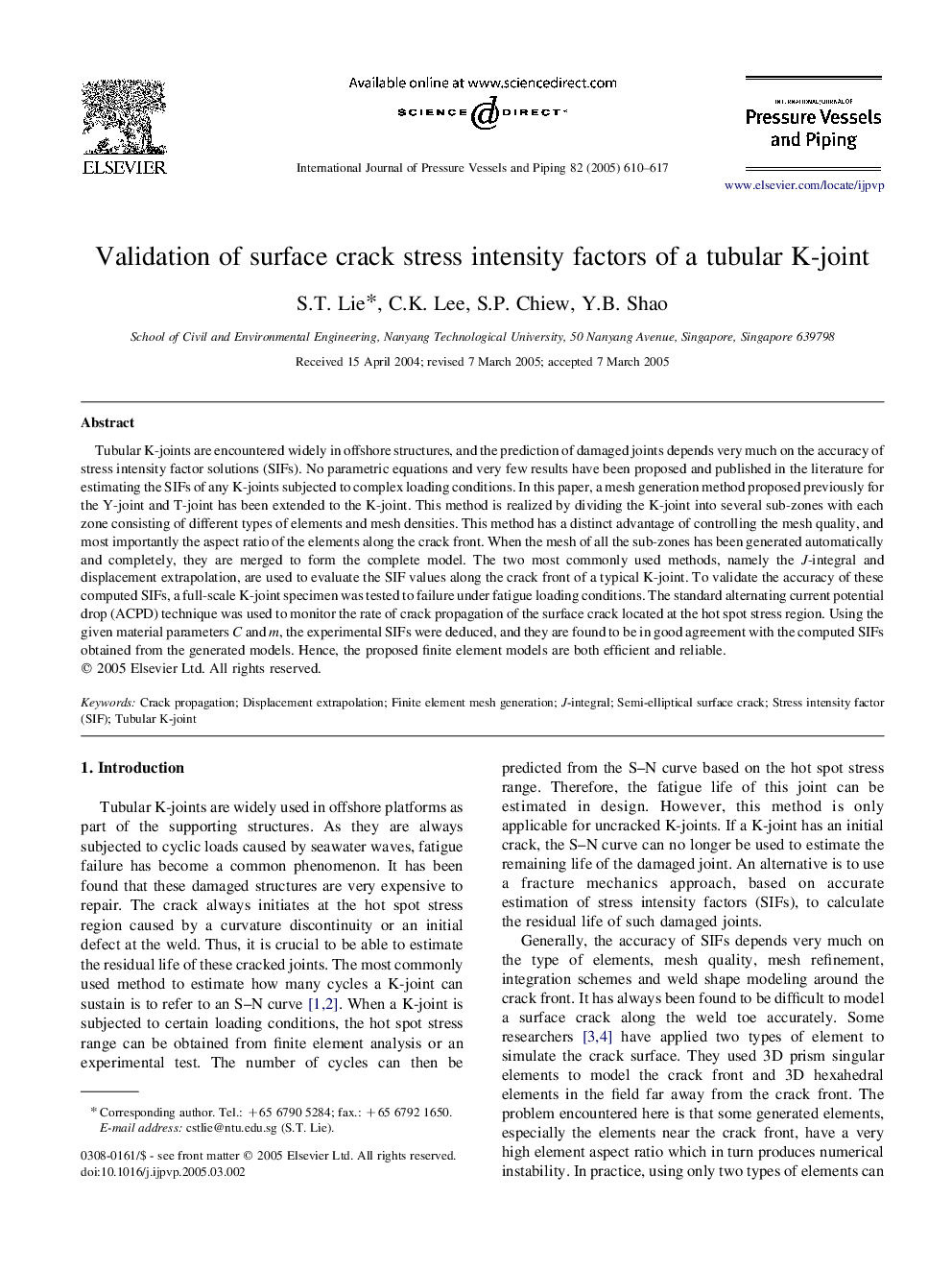| Article ID | Journal | Published Year | Pages | File Type |
|---|---|---|---|---|
| 9707608 | International Journal of Pressure Vessels and Piping | 2005 | 8 Pages |
Abstract
Tubular K-joints are encountered widely in offshore structures, and the prediction of damaged joints depends very much on the accuracy of stress intensity factor solutions (SIFs). No parametric equations and very few results have been proposed and published in the literature for estimating the SIFs of any K-joints subjected to complex loading conditions. In this paper, a mesh generation method proposed previously for the Y-joint and T-joint has been extended to the K-joint. This method is realized by dividing the K-joint into several sub-zones with each zone consisting of different types of elements and mesh densities. This method has a distinct advantage of controlling the mesh quality, and most importantly the aspect ratio of the elements along the crack front. When the mesh of all the sub-zones has been generated automatically and completely, they are merged to form the complete model. The two most commonly used methods, namely the J-integral and displacement extrapolation, are used to evaluate the SIF values along the crack front of a typical K-joint. To validate the accuracy of these computed SIFs, a full-scale K-joint specimen was tested to failure under fatigue loading conditions. The standard alternating current potential drop (ACPD) technique was used to monitor the rate of crack propagation of the surface crack located at the hot spot stress region. Using the given material parameters C and m, the experimental SIFs were deduced, and they are found to be in good agreement with the computed SIFs obtained from the generated models. Hence, the proposed finite element models are both efficient and reliable.
Keywords
Related Topics
Physical Sciences and Engineering
Engineering
Mechanical Engineering
Authors
S.T. Lie, C.K. Lee, S.P. Chiew, Y.B. Shao,
